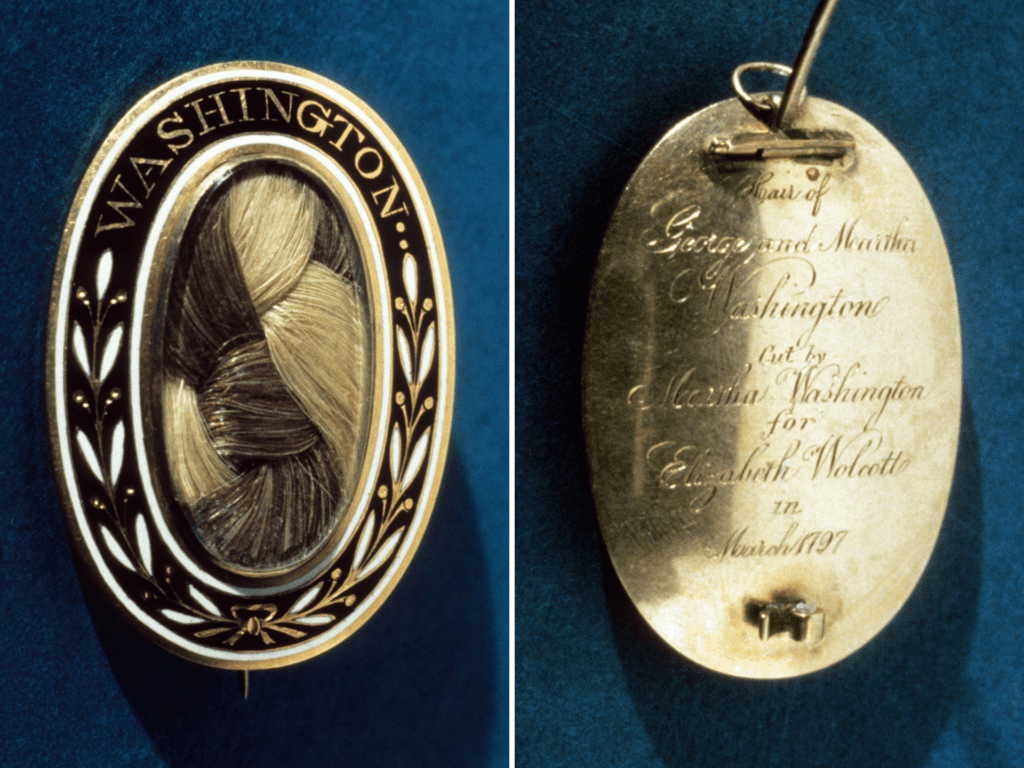By El Clauss
Imagine you got a letter from your dear friend requesting a lock of your husband’s hair. Once you received it, you picked up a pair of scissors and cut not only a lock of his hair but also a lock of your own. After entwining them, you sent them off to your friend. Upon receiving the hair, your friend enclosed the locks in a brooch and engraved it with the story commemorating your friendship.
This probably sounds strange to us in the 21st century when we share photos with friends and family hundreds or thousands of miles away. However, prior to photography, exchanging locks of hair was a common token of friendship.
This is a true story about Mrs. Elizabeth Stoughton Wolcott of Connecticut. She was married to Oliver Wolcott Jr., the first auditor of the United States and the second treasurer after Alexander Hamilton. She wrote a letter to her close friend Martha Washington asking for a token of their friendship. It is said that Mrs. Washington instantly took her scissors and, with a happy smile, cut a large lock of her husband’s hair, added to it one of her own, and presented them to her “fair friend.” While we are unsure exactly when Mrs. Wolcott had a brooch made with the hair enclosed, it would have celebrated their friendship. However, when George Washington died it took on a new role: mourning jewelry.

1797: Washington City, United States
Gold; Enamel on copper; Hair; Leather; Glass
Gift of Mrs. Paul Hammond 1962.0084
Mourning jewelry are unique personal adornments worn during a period of mourning to commemorate someone who died. Originating in the Middle Ages, this jewelry tradition grew in popularity and the designs changed greatly over the years. The jewelry could be a ring, a necklace, a cane handle, a watch fob, a bracelet, or a brooch and were worn by everyone regardless of gender. People gave them to close relatives and friends at a funeral, even leaving money in their will to pay for them. It was also common to use mourning jewelry to commemorate political figures like George Washington.
After Washington died, there was an outpouring of memorial pieces created to honor him. Winterthur features numerous examples in the collection, crafted in a wide variety of media. It can be argued that the brooch made for Mrs. Elizabeth Stoughton Wolcott, while perhaps not initially intended as mourning jewelry, would certainly have become one upon his death. Mrs. Wolcott would have felt honored not just by the token of friendship it represented but also by her ability to wear such an important piece of jewelry to honor the loss of President Washington. Thanks to her family treasuring the piece for generations before they donated it to Winterthur, we are now able to share in its rich history. In doing so, we memorialize not just George and Martha Washington but also their lasting friendship with the Wolcotts.